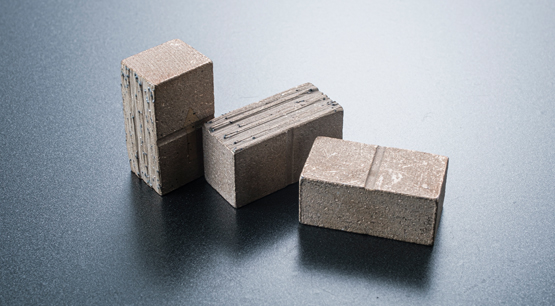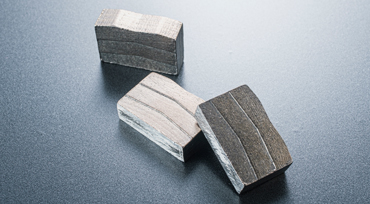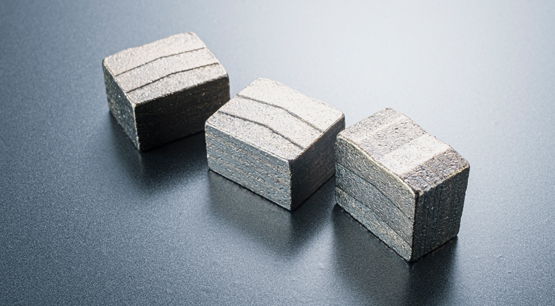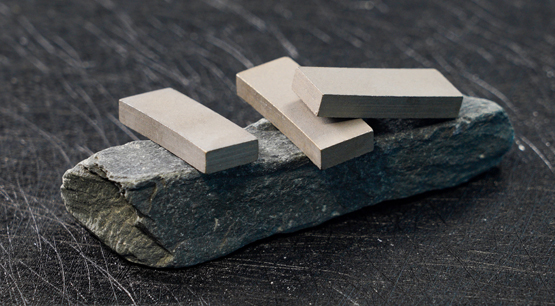Diamond segments are hard and are often welded to diamond saw blades for cutting very hard materials. Such as stone, concrete, road, cement, wall, ceramic tile, pottery and porcelain, etc. Why is the segment so hard, and how is it made? This article will describe the synthesis process of diamond segments in detail through two commonly used processes in the production of segments.
There are many steps in the synthesis of diamond segments, such as batching, stirring, cold pressing, mold loading, sintering, mold removal and other steps. However, the core of the formation of the segment structure is divided into two steps, one is the diamond segment cold press forming process, and the other is the diamond segment hot press forming process. These two processes complete the synthesis of the diamond segment.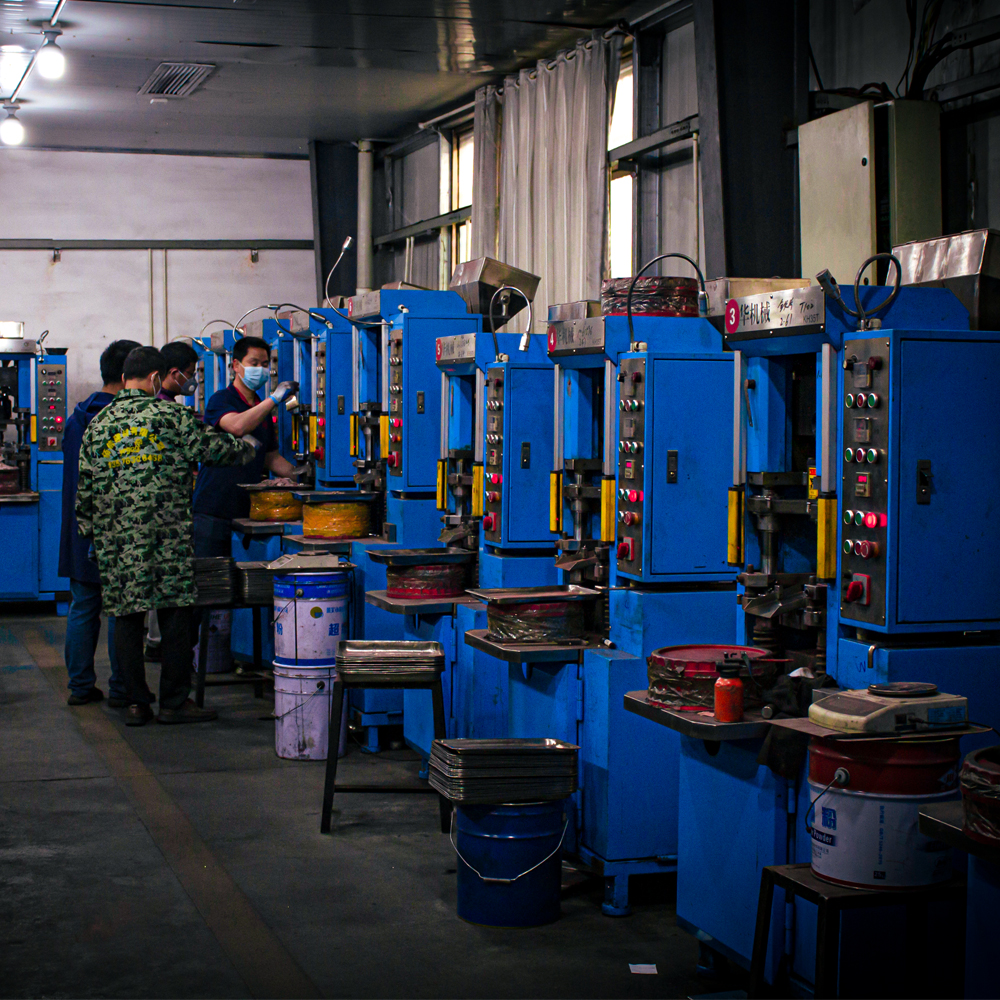 Diamond segment cold forming:
Diamond segment cold forming:
It means that the powder is poured on the cold pressing mold to directly form the shape required by the segment. The cold press mold consists of five parts: the upper pressure head, the lower pressure head, the center plate, the front end plate, and the rear end plate. The order of arrangement of each part is used to form the cavity required by the segment, and the periphery of the cold press mold is fixed so that the cavity will not be deformed after being pressurized. Then workers add the required powder in the cavity, put it into the upper pressure head, and machine apply high pressure to stop the pressure when the powder changes from loose to solid shape of the desired segment shape. After that, workers discrete the fixing device around the cold-pressing mold, and separate the cold-pressing mold, take out the segments one by one, arrange the segments manually, and wait for use. The purpose is to increase the formation of the water channel of the segment during the cutting process of the segment, and also to increase the cutting gap, maintain the cutting efficiency and reduce the cost of the segment. It has been found that in the process of cold-pressing the segment, the effect of forming multiple layers is beneficial to the cutting of the segment.
Later, it was found that the consumption of the middle material and the side material of the multi-layer segment is inconsistent. Then how to adjust the ratio of the middle material and the side material to make the consumption of the segment more uniform has become the core technology of the cold pressing of the segment. So the middle layer and the edge layer of the segment layered sheet need to be processed separately, and cold pressing is this step. With the further improvement of segment technology, people found that if iron sheet and diamond-free powder layer can be used to form a better water channel, so the interlayer segment came into being. This type of segment (if it is a powder barrier) needs to consider the thickness of the powder barrier during the design process. During the cold pressing process, this type of powder is also processed separately. After undergoing such a cutting process, the cutting segment is a layer-by-layer sheet structure, which is also a change of the cutting segment from powder to block dispersion structure.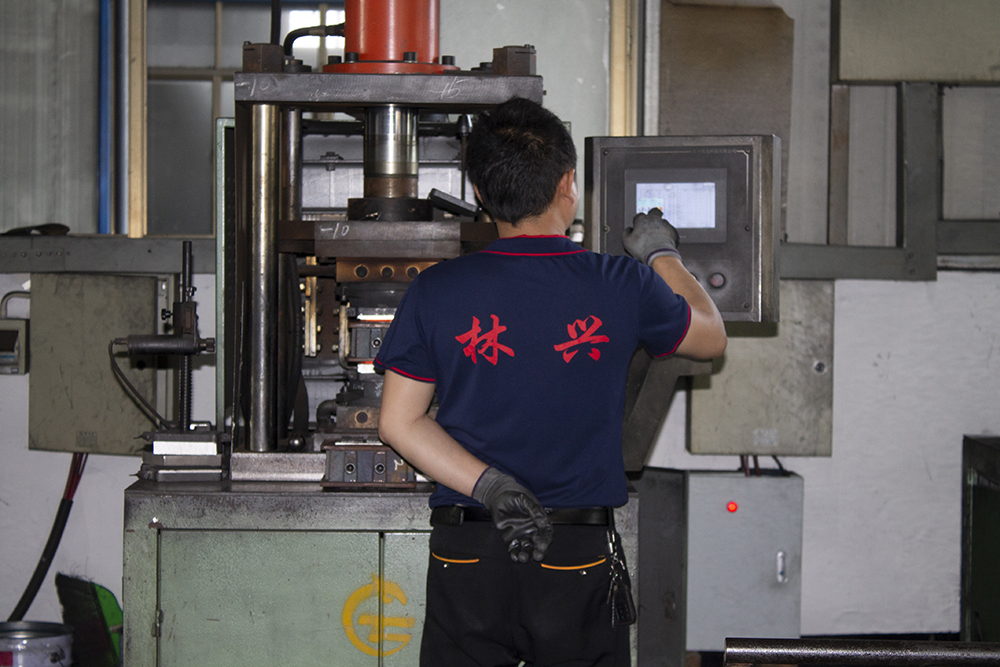 Diamond segment hot press forming process:
Diamond segment hot press forming process:
This process is to put the cold-pressed diamond segments of different intermediate materials or non-working layers on the hot-pressing mold in the correct order, and form them under high temperature and high pressure. The hot pressing mold includes five parts, the upper pressure head, the lower pressure head, the middle plate, the end plate and the side plate. The cavity is formed by arranging the parts in order, and the cold-pressed diamond segment is placed in the cavity, and the periphery of the hot-pressed mold is fixed and put into the sintering equipment, so that the diamond segment is melted under high temperature and high pressure to form an alloy. After the final molding, the temperature is lowered and the pressure is reduced, the fastening device is removed, and the diamond segment is taken out.
In the production process of the segment, the selection of the quality of the segment carcass material and the hot pressing process are the hubs of the entire production process of the segment. High-quality cobalt-based bronze-based alloys are widely used as carcass materials. But because cobalt powder materials and copper powder materials are expensive, and in terms of application, good results can be produced without high costs. In terms of the performance of the final product , new bond synthesis is the direction that the long-term development of the segment must take. After long-term analysis and a large number of experiments, the researchers proposed four kinds of Fe-Ni-Cu-W alloys as the carcass material of the segment. After testing and long-term application, a relatively low-cost and cost-effective carcass product performance has been obtained.
The production process of diamond segment can be described as the sintering process of metal powder under a certain pressure, which is a powder metallurgy process: uniform and mixed metal powder is processed at high temperature (800-1000°C) and under a certain pressure (180-250Kgf/ cm2), through a series of physical and chemical effects such as dispersion, welding, compounding, and recrystallization among powder particles, a sintered bond with a certain shape and bond function is formed under the process environment of solid-phase sintering and liquid-phase sintering.
The above is the detailed explanation of the diamond segment synthesis process.

Detailed explanation of diamond segment synthesis process
Publish date:2022-12-13 10:30:28 Article From:LINSING diamond tools Clicks:




